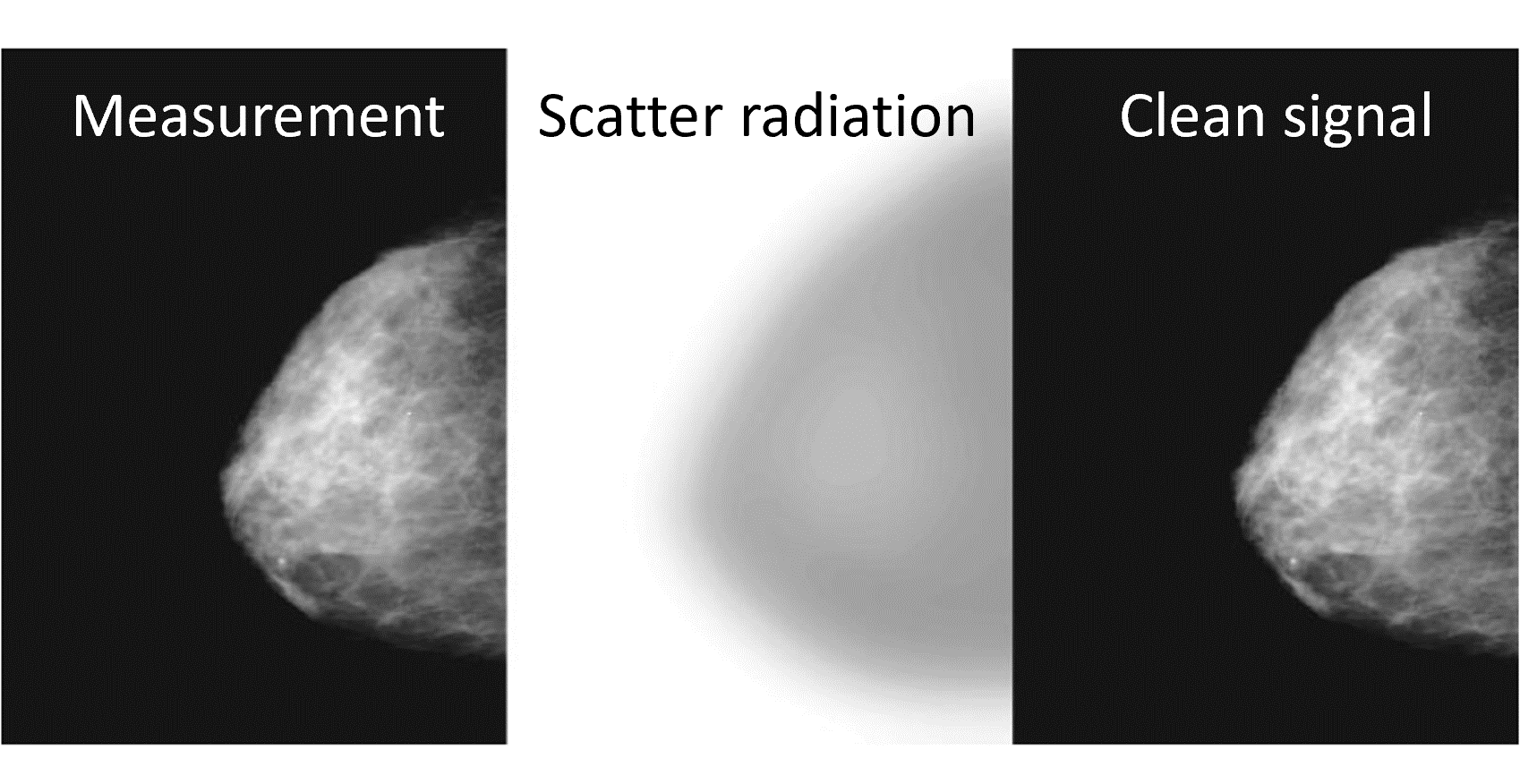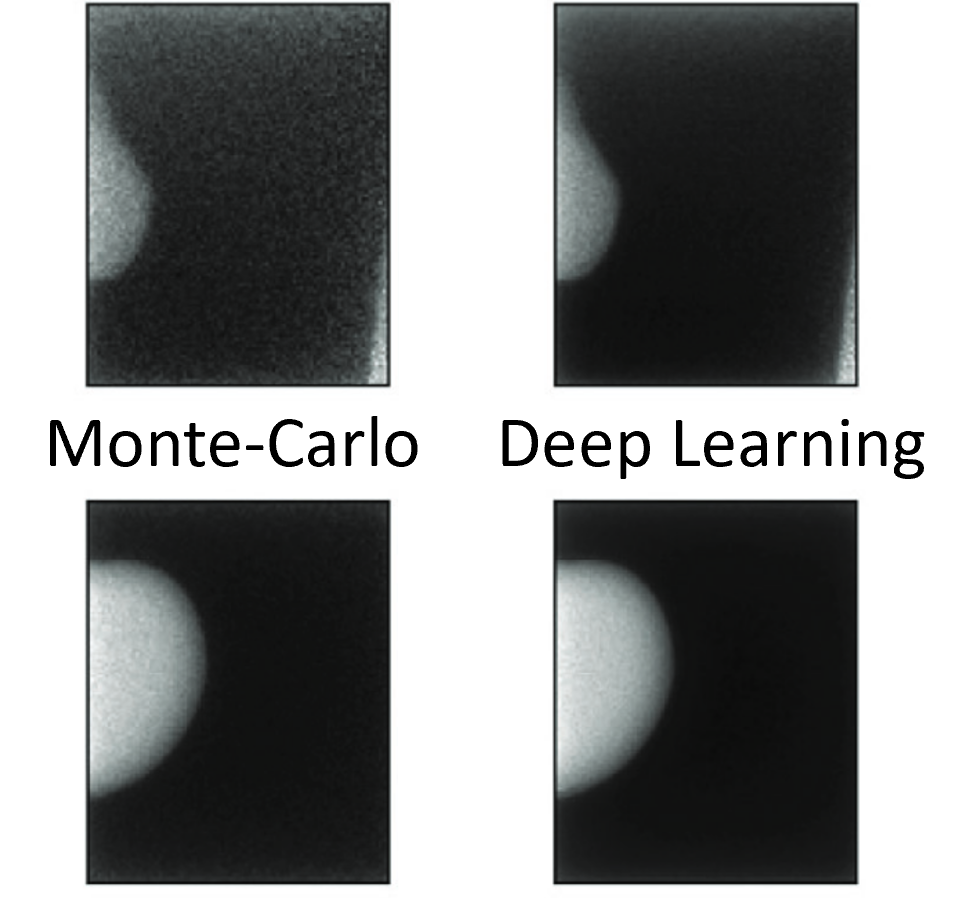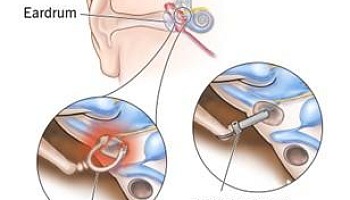Contact: Pim Van Den Berg.
Scattered x-ray photons cause image blurring in digital mammography and breast tomosynthesis, see Figure 1. A solution is to estimate and remove scattered radiation with image processing. This can be done by simulating x-ray physics with slow and expensive Monte-Carlo methods. To improve performance, we have developed scatter predictors using deep neural networks by making use of our generative breast shape models, see Figure 2.

Figure 1: Example scatter radiation occuring during measurement.

Figure 2: Example of scatter analysis. Extracted from [1].
Method and tasks
Our state-of-the-art generative breast shape model has recently been extended to the technologically challenging medio-lateral oblique (MLO) view. We are also investigating image processing in more complex imaging modalities such as dual energy mammography. Your project will be centered around:
- Adapting an existing scatter predictor to make use of our new MLO model.
- Creating a new deep learning architecture to predict scattering as a function of x-ray energy (tube kV).
You will create the first real application of our new MLO breast shape model! This project involves working with 3D point clouds, neural networks and physics-based Monte-Carlo simulations in a Python environment.
Goals
-
A CC/MLO view agnostic scatter estimator.
-
A deep learning architecture for scatter estimation at any x-ray energy.
We are looking for a MSc student that is enthusiastic about:
- Making a small but important advancement in breast cancer research
- Applying physics-based simulations
- Training and optimizing deep learning networks.
If you are interested, please contact our PhD student Pim van den Berg (
The project duration is 6-9 months.
For more information, visit the research section associated with this project here.
References:
[1] Pinto MC et al. A deep learning approach to estimate x-ray scatter in digital breast tomosynthesis. Med Phys. 2023.
